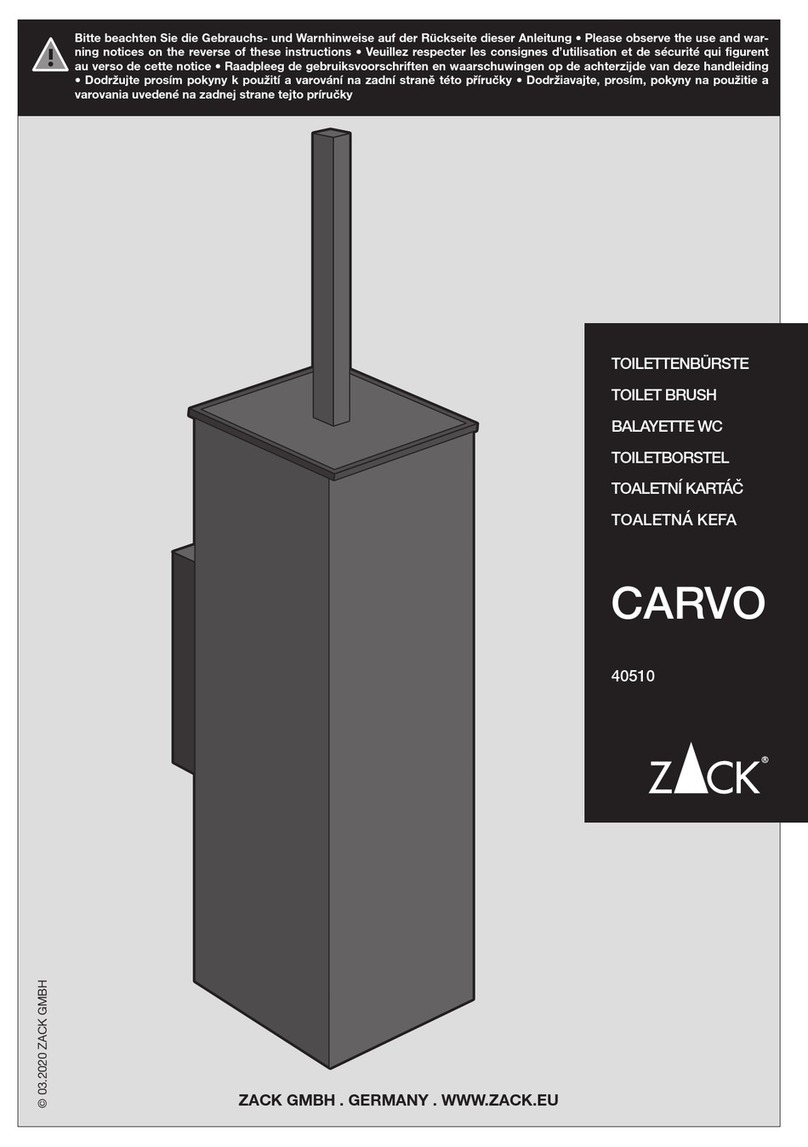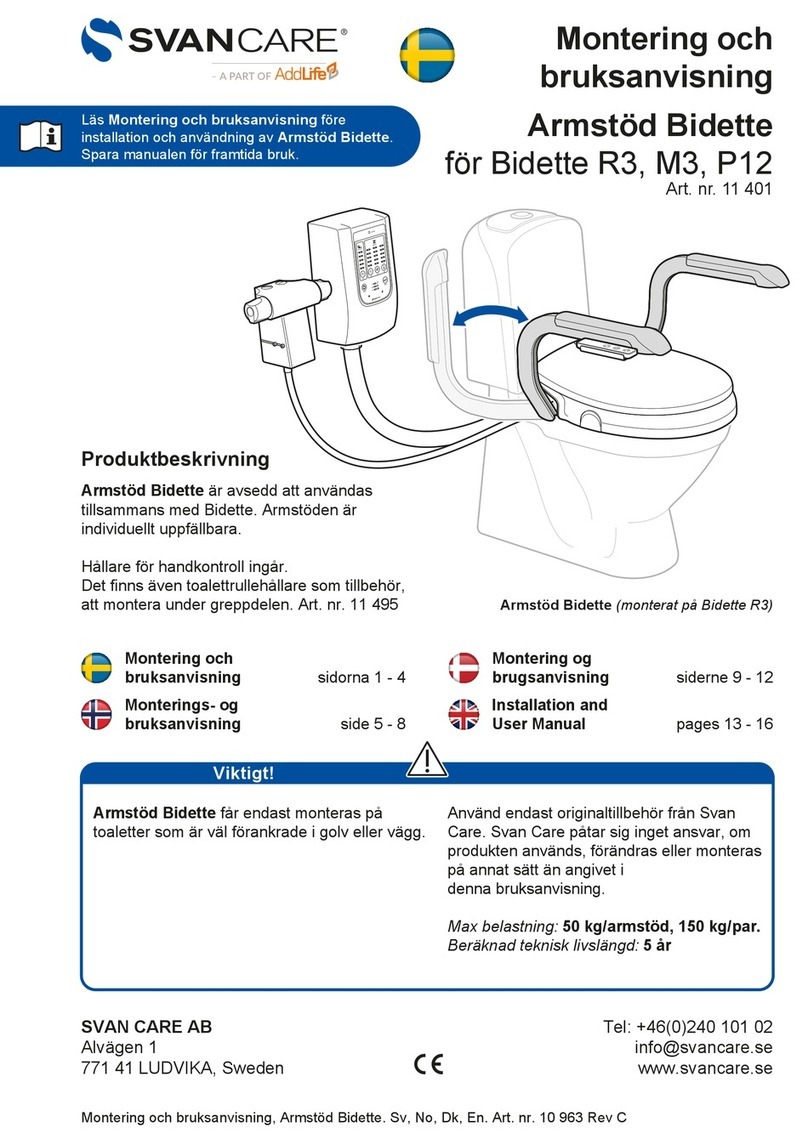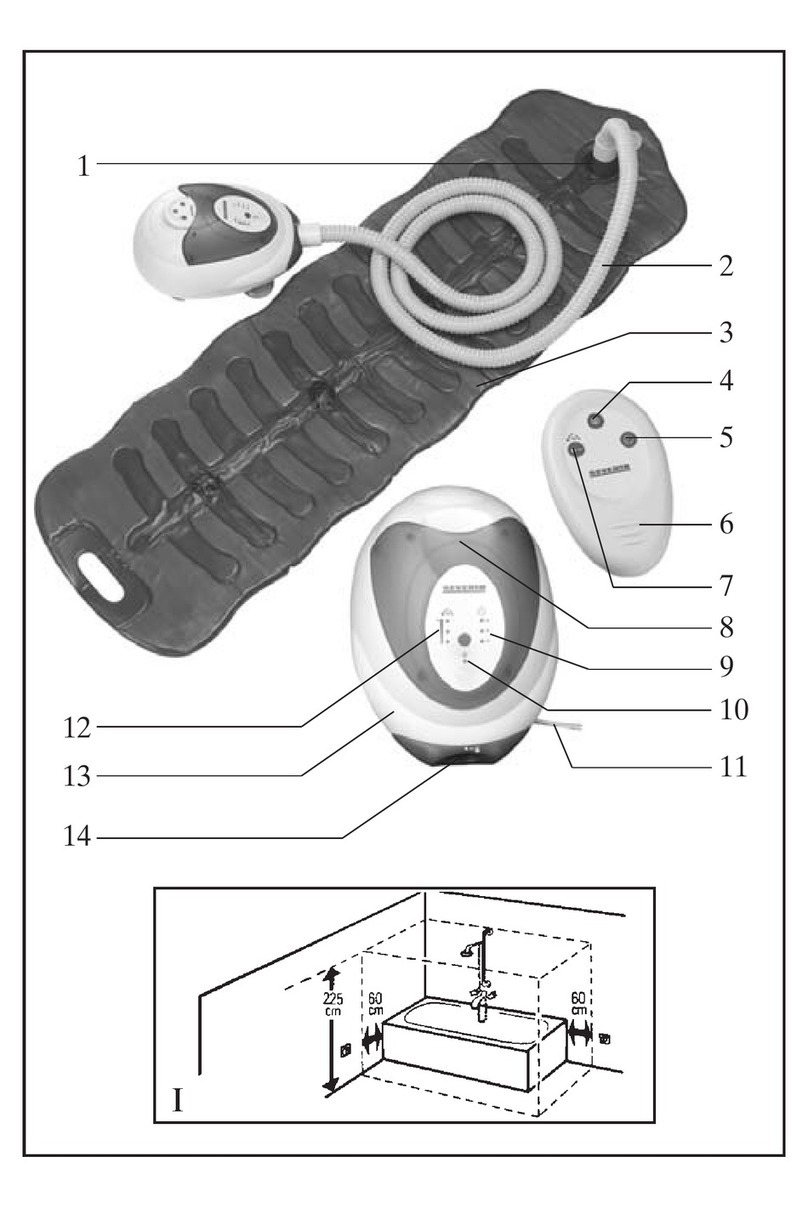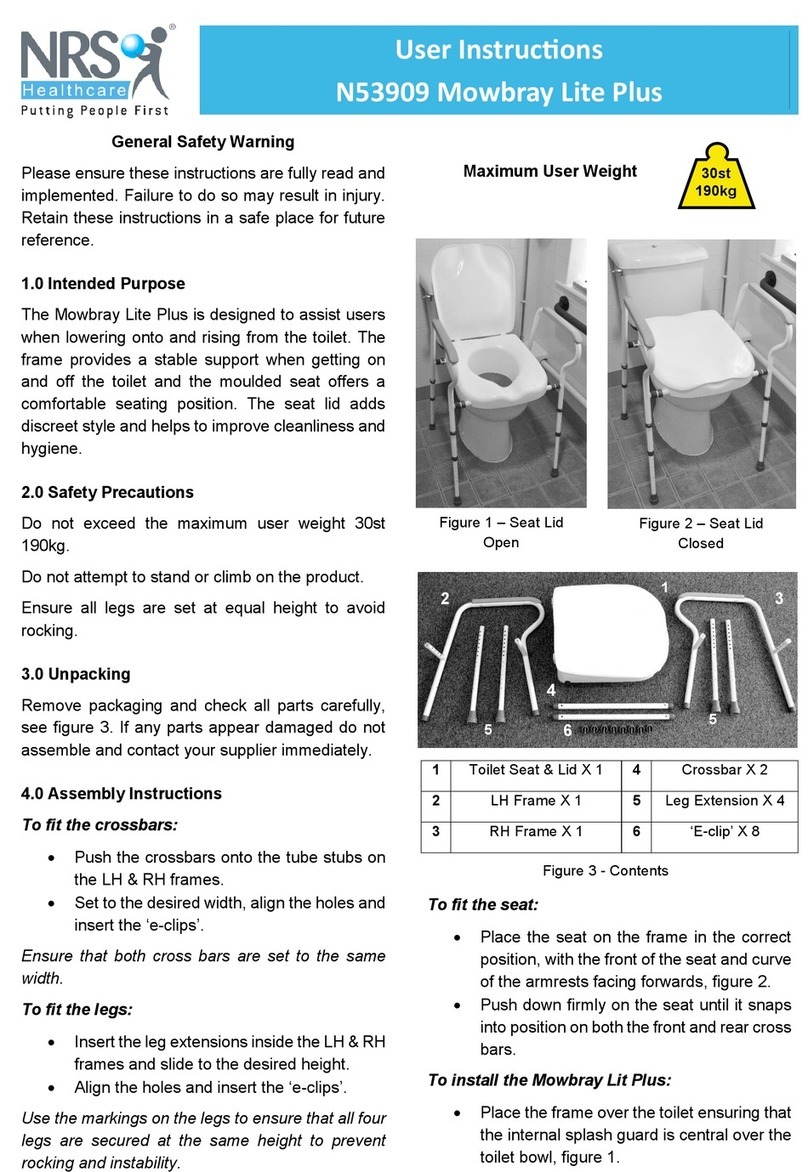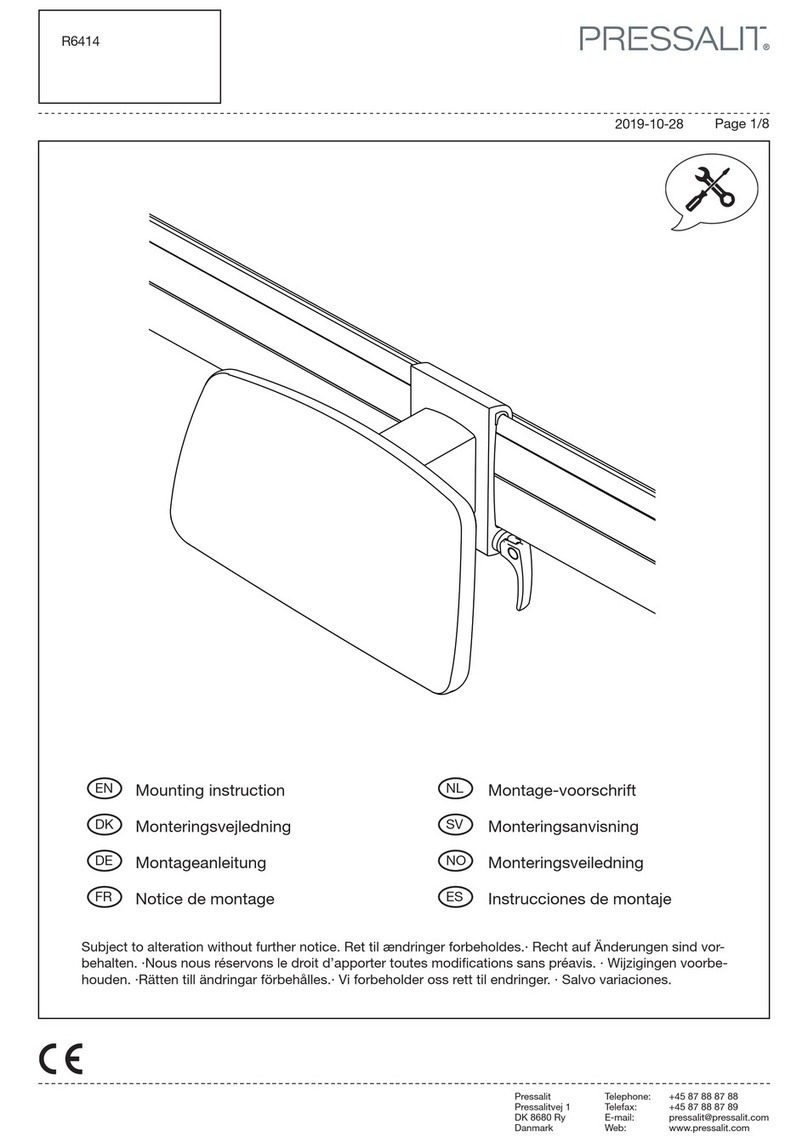Grohe 35 500 Quick start guide

D.....1 I.....5 N.....9 GR .....13 TR .....17 BG .....21 RO .....25
GB .....2 NL .....6 FIN .....10 CZ .....14 SK .....18 EST .....22 CN .....26
F.....3 S.....7 PL .....11 H.....15 SLO .....19 LV .....23 RUS .....27
E.....4 DK .....8 UAE .....12 P.....16 HR .....20 LT .....24
Design + Engineering GROHE Germany
Rapido T
Rapido T
96.076.231/ÄM 229852/01.14
35 500

I
Please pass these instructions on to the end user of the fitting!
S.v.p remettre cette instruction à l'utilisateur de la robinetterie!
Bitte diese Anleitung an den Benutzer der Armatur weitergeben!
35 500

II
1
B1.
B1
2.
7
D
G
H
I
8mm
8
J
27mm
9
K
K1 K2
12mm
C
C
A
2
10 11
3C
1
A
12mm
8mm
D
E
4
F
5
E
D
8mm
6

1
D
Anwendungsbereich
Betrieb ist möglich mit:
• Druckspeichern
• Thermisch/Hydraulisch gesteuerten Durchlauferhitzern
Der Betrieb mit drucklosen Speichern
(offenen Warmwasserbereitern) ist nicht möglich!
Verwendung als:
• Wanneninstallation/Brauseninstallation/Zentralinstallation
Alle Thermostate werden im Werk bei einem beidseitigen
Fließdruck von 3 bar justiert.
Bei Montage als Zentralthermostat können an den
Entnahmestellen Mischbatterien installiert werden. In diesem
Falle liefert die Thermostat-Batterie temperiertes Wasser
und es kann kaltes Wasser zugemischt werden.
Ein zusätzliches Absperrorgan ist nur notwendig,
wenn weitere Zapfstellen über freibleibende Abgänge
angeschlossen werden.
Technische Daten
• Fließdruck
- Mindestfließdruck ohne
nachgeschaltete Widerstände 0,5 bar
- Mindestfließdruck mit
nachgeschaltete Widerstände 1 bar
- Empfohlen 1 - 5 bar
• Betriebsdruck max 10 bar
• Prüfdruck 16 bar
Zur Einhaltung der Geräuschwerte nach DIN 4109 ist bei
Ruhedrücken über 5 bar ein Druckminderer einzubauen.
Höhere Druckdifferenzen zwischen Kalt- und
Warmwasseranschluss sind zu vermeiden!
• Durchfluss bei 3 bar Fließdruck
(bei gleichzeitiger Nutzung aller Abgänge) ca. 53 l/min
Bei der Installation des Abflusses beachten!
• Mindestdurchfluss 5 l/min
• Temperatur:
Warmwassereingang max. 80 °C
Zur Energieeinsparung empfohlen 60 °C
• Sicherheitssperre 38 °C
• Warmwassertemperatur am Versorgungsanschluss
min. 2 °C höher als Mischwassertemperatur
Achtung bei Frostgefahr
Bei Entleerung der Hausanlage sind die Thermostate
gesondert zu entleeren, da sich im Kalt- und
Warmwasseranschluss Rückflussverhinderer befinden. Bei
den Thermostaten sind die kompletten Thermostateinsätze
und die Rückflussverhinderer auszuschrauben.
Hinweis:
Bei der Kombination von Unterputzbatterien mit
Wannenfüll- und Überlaufgarnituren Folgendes beachten:
• Laut EN1717 ist eine zugelassene Sicherheitseinrichtung
vorgeschrieben. Hierzu kann ein Sonderzubehör eingesetzt
werden (siehe Ersatzteile Klappseite I, Best.-Nr.: 29 007).
Die Sicherheitseinrichtung muss über dem Wannenrand
montiert werden!
Installation
Maßzeichnung auf Klappseite I beachten.
Einbau,siehe Klappseite II Abb. [1].
Unterschiedliche Einbaumöglichkeiten, siehe vorgesehene
Befestigungslöcher in Abb. [1].
Bei Installation eines GROHE Custom Shower Systems ist auf
Höhe der Markierung, siehe Detail B1, eine Ausrichtungslinie
für weitere Installationsboxen zu ziehen.
Löcher für Thermostaten sowie Schlitze für die Rohrleitungen
erstellen (siehe DIN 1053).
Thermostat mit Einbauschablone einbauen,
siehe Abb. [2] und [3].
• Die fertige Wandoberfläche muss im Bereich (A)
der Einbauschablone liegen.
• Der Warmwasseranschluss muss links,
der Kaltwasseranschluss rechts erfolgen.
Thermostat ausrichten,siehe Abb. [1].
Wasserwaage auf die Nocken (B) der Einbauschablone legen.
Rohrleitungen anschließen,siehe Abb. [2] und [3].
• Bei Einbau als Wannenbatterie muss ein beiliegender
Stopfen (C) in den freibleibenden Abgang (unten)
eingedichtet werden, siehe Abb. [2].
• Bei Einbau als Brausebatterie müssen die beiliegenden
Stopfen (C) in die freibleibenden Abgänge (oben und unten)
eingedichtet werden, siehe Abb. [2].
• Bei Einbau als Zentralbatterie müssen die beiliegenden
Stopfen (C) in die freibleibenden Abgänge (oben)
eingedichtet werden, siehe Abb. [3].
Der untere Abgang erfordert immer ein zusätzliches
Absperrorgan.
Eine Lötverbindung darf nicht vorgenommen werden,da
sie die eingebauten Rückflussverhinderer beschädigen kann.
Kalt- und Warmwasserzufuhr öffnen und
Armaturenanschlüsse auf Dichtheit prüfen.
Rapido T in Kombination mit Wannenfüll- und
Überlaufgarnitur, siehe Abb. [4] bis [6].
Wasser zur Wannenfüll- und Überlaufgarnitur während
der Installation mit beiliegenden Stopfen (F) absperren:
1. Deckel (D) abnehmen, siehe Abb. [4].
2. Verschlussstopfen (E) herausschrauben.
3. Stopfen (F) in den Abgang für Wannenfüll- und
Überlaufgarnitur einsetzen, siehe Abb. [5].
4. Verschlussstopfen (E) einschrauben, siehe Abb. [6].
5. Deckel (D) montieren.
Hinweis:
Bei Montage der Feininstallationen muss der Stopfen (F)
entfernt werden.
Rohrleitungen vor und nach der Installation gründlich
spülen(DIN 1988/DIN EN 806), siehe Abb. [7] und [8].
1. Deckel (D) abnehmen, siehe Abb. [7].
2. Kalt- und Warmwasserzufuhr schließen.
3. Verschlussschraube (G) herausschrauben.
4. Rückflussverhinderer (H) und Sieb (I) herausnehmen.
5. Spülstopfen (J) in den freien Sitz des
Rückflussverhinderers einschrauben, siehe Abb. [8].
6. Kalt- und Warmwasserzufuhr öffnen und die
Rohrleitungen durchspülen.
7. Kalt- und Warmwasserzufuhr schließen
und die Spülstopfen (J) entfernen.
8. Sieb (I) und Rückflussverhinderer (H) einsetzen,
siehe Abb. [7].
9. Verschlussschraube (G) einschrauben.
10. Kalt- und Warmwasserzufuhr öffnen.
Trägermaterial für Dichtmittel montieren,
siehe Abb. [9] und [10].
1. Dichtmittel oder Kleber auftragen, siehe Abb. [9].
2. Mittelteil (K1) des Trägermaterials (K) an den Stegen (K2)
heraustrennen.
3. Trägermaterial (K) über die Einbauschablone schieben.
4. Nochmals Dichtmittel oder Kleber auftragen, siehe Abb. [10].
Wand fertig verputzen und verfliesen, siehe Abb. [11].
Einbauschablone nicht vor der Fertiginstallation kürzen.
Ersatzteile, siehe Klappseite I (* = Sonderzubehör).

2
GB
Application
The Concealed System can be used in conjunction with:
• Pressurised storage heaters
• Thermally/hydraulically controlled instantaneous heaters
Operation with unpressurised storage heaters (displacement
water heaters) is not possible.
Use as:
• Bath installation/Shower installation/Central installation
All thermostats are adjusted in the factory at a flow pressure
of 3 bar on both sides.
If the Concealed System is installed as a central thermostat,
standard mixers can be installed at the draw-off points. In this
case, the thermostat mixer supplies hot water to which cold water
can be added.
An additional stopcock is only required if further discharge
points are to be connected via unused outlets.
Technical data
• Flow pressure
- Minimum flow pressure without
downstream resistances 0.5 bar
- Minimum flow pressure with
downstream resistances 1 bar
- Recommended 1 - 5 bar
• Max. operating pressure 10 bar
• Test pressure 16 bar
If static pressure exceeds 5 bar, a pressure
reducing valve must be fitted.
Avoid major pressure differences between
hot and cold water supply.
• Flow rate at 3 bar flow pressure (with concurrent
use of all discharge points) approx. 53 l/min
Note when installing the outlet:
• Minimum flow rate 5 l/min
• Temperature:
Hot water inlet max. 80 °C
Recommended (energy saving) 60 °C
• Safety stop 38 °C
• Hot water temperature at supply connection
min. 2 °C higher than mixed water temperature
Prevention of frost damage
When the domestic water system is drained, thermostats must be
drained separately, since non-return valves are installed in the hot
and cold water connections. The complete thermostat assemblies
and non-return valves must be unscrewed and removed.
Note:
In the case of concealed shower mixers with bath filling and
overflow sets, observe the following:
• According to EN1717 an approved safety device is
stipulated. A special accessory can be used for this purpose
(see Replacement parts, fold-out page I, Prod. no.: 29 007).
• The approved safety device must be installed above the
bathtub rim!
Installation
Installation,see fold-out page II Fig. [1].
Refer to the dimensional drawing on fold-out page I.
For different installation options, see the pre-drilled holes
in Fig. [1].
When installing a GROHE Custom Shower system, an
orientation line for further installation boxes must be drawn at
the height of the marking, see detail (B1).
Prepare the holes for the thermostatic mixer and slots
for the pipes.
Install the thermostat using the fitting template,
see Figs. [2] and [3].
• The finished surface of the wall must lie within the area (A)
of the fitting template.
• The hot water supply must be connected on the left and the
cold water supply on the right.
Align the thermostat,see Fig. [1].
Place a spirit level on the cams (B) of the fitting template.
Connect the pipes,see Figs. [2] and [3].
• When installing as bath mixer, the plug (C) provided must be
sealed in the unused outlet (bottom), see Fig. [2].
• When installing as shower mixer, the plug (C) provided must
be sealed in the unused outlets (top and bottom),
see Fig. [2].
• When installing as central mixer, the plug (C) provided must
be sealed in the unused outlet (top), see Fig. [3].
The lower discharge point always requires an additional
stopcock.
A soldered connection is not permissible,as this could
damage the built-in non-return valve.
Open the cold and hot water supply and check the fitting
connections for watertightness.
Rapido T in combination with bath filling and overflow
sets, see Fig. [4] to [6].
Stop waterflow to bath filling and overflow sets during the
installation with attached plug (F):
1. Remove cover (D), see Fig. [4].
2. Unscrew closer plug (E).
3. Fit plug (F) in the outlet for bath filling and overflow sets,
see Fig. [5].
4. Install in screw plug (E), see Fig. [6].
5. Fit cover (D).
Note:
When assembling the detailed installations, the plug (F) must
be removed.
Flush the pipes thoroughly before and after installation
(observe EN 806), see Figs. [7] and [8].
1. Remove the cover (D), see Fig.[7].
2. Close the hot and cold water supply.
3. Remove the screw plug (G).
4. Remove the non-return valve (H) and filter (I).
5. Install the flushing plugs (J) in non-return valve seat
recesses, see Fig. [8].
6. Open the hot and cold water supply and flush the pipes
thoroughly.
7. Close the hot and cold water supply and remove the
flushing plugs (J).
8. Install the filter (I) and non-return valve (H), see Fig. [7].
9. Replace the screw plug (G).
10. Open the cold and hot water supply.
Fit substrate for sealant,see Figs. [9] and [10].
1. Apply sealant or adhesive, see Fig. [9].
2. Remove the centre piece (K1) of the substrate (K) by cutting
through the tabs (K2).
3. Push the substrate (K) over the fitting template.
4. Apply sealant or adhesive again, see Fig. [10].
Plaster and tile the wall, see Fig. [11].
Do not cut the fitting template before final installation.
Replacement parts, see fold-out page I (* = special
accessories).
This manual suits for next models
1
Table of contents
Languages:
Popular Bathroom Aid manuals by other brands

Cobi Rehab
Cobi Rehab XXL-Rehab Rise N Tilt user manual

Invacare
Invacare 9630E Styxo Assembly, installation and operating instructions
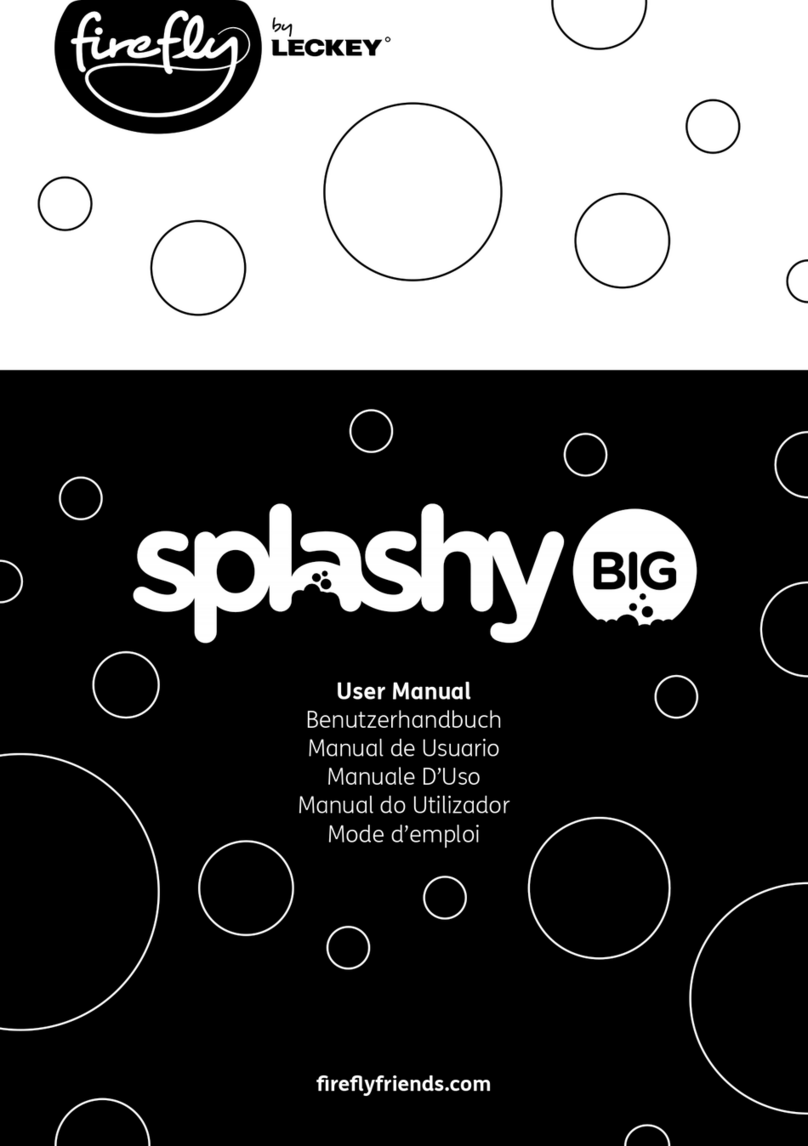
Leckey
Leckey firefly splashy BIG user manual
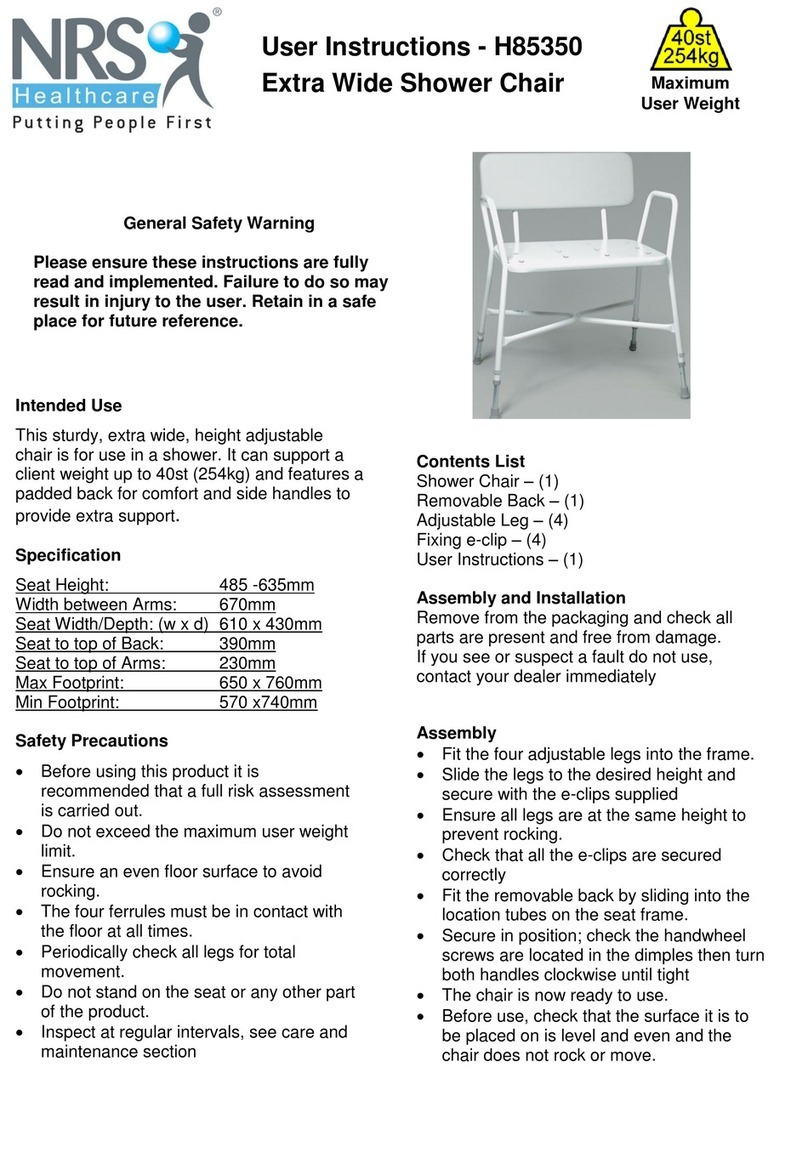
NRS Healthcare
NRS Healthcare H85350 User instructions
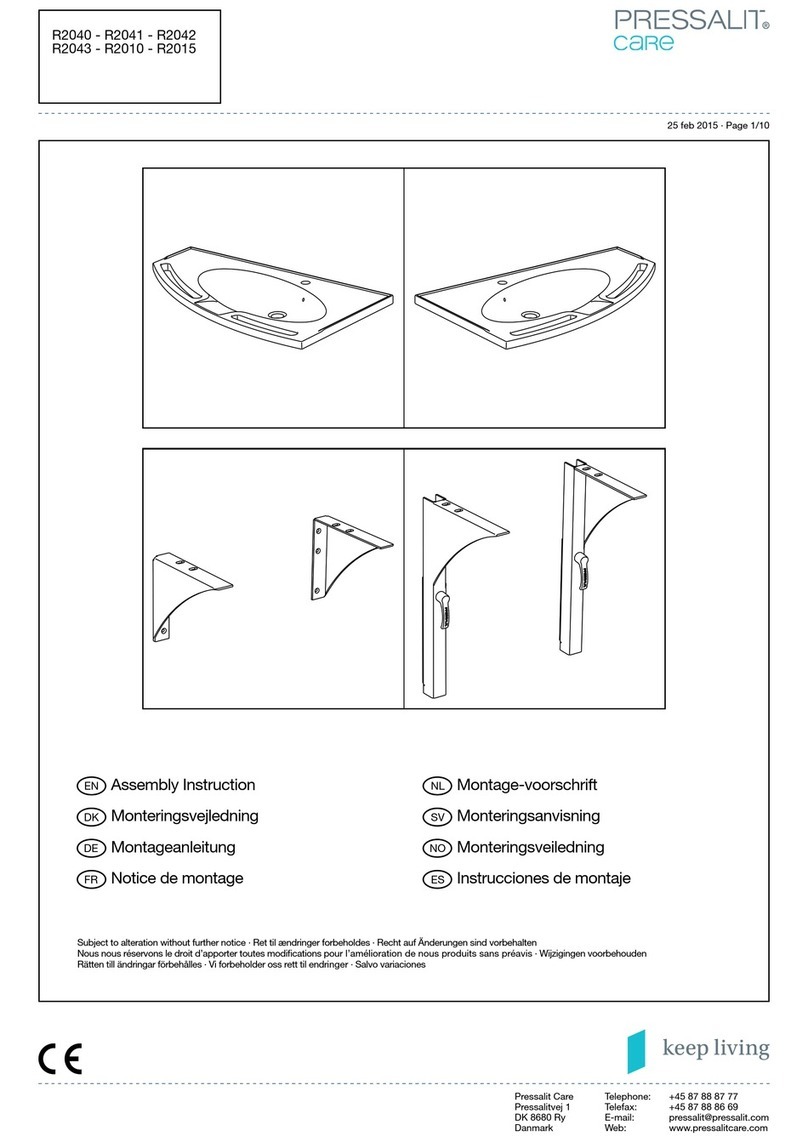
Pressalit Care
Pressalit Care R2040 Assembly instruction

WENKO
WENKO 23285100 Assembly instructions



